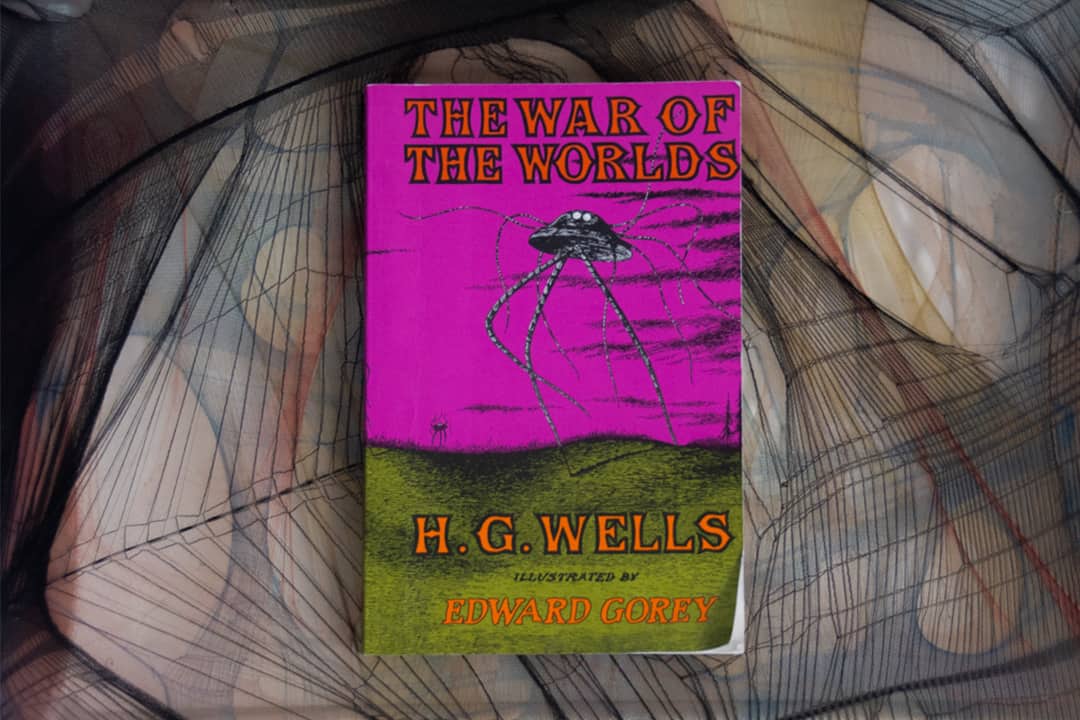War of the Worlds by H. G. Wells is an 1898 literary classic, having inspired a blockbuster radio play in the 1930s and multiple text-to-screen adaptations, including one directed by Steven Spielberg that starred big names like Tom Cruise and Dakota Fanning. Through his masterful and unique storytelling, Wells has predated and elevated his work above the myriad of similar “alien invasion” stories.
The novel begins by discussing the differences between Earth and Mars. It describes that the red planet, once assumed to be barren, sustained highly intelligent life long before our own planet was molten. However, Mars’ limited resources have dwindled — thus, Martians saw Earth as the solution to their problem of scarcity. The narrator transitions from these scientific musings to his own routine and how it was disrupted upon the Martians’ arrival in England.
When they first land, the Martians initially seem to pose no threat to humankind, but the narrator’s anxieties about the Martians become heightened when they destroy spectators of the landing with their heat ray. The English militia slowly loses control as they are overpowered by the Martians, and human institutions such as press and governance crumble amid the mass chaos incurred by the Martians’ arrival.
The lives lost to the intelligent and armed Martians rapidly accumulate as they attempt to exterminate humans with intense heat waves and poisonous gas. These deaths invoke fear in the narrator and the characters that stir madness, stripping mankind to its most raw and unbridled state. The society that remains warps into a perverse competition for survival.
As he maneuvers through the Martians’ new stomping ground, the morose narrator concludes that humanity has been defeated. He mourns his wife, whom he presumes to be dead, and the fate of the world as he aimlessly roams the bloody, battered, and stagnant London streets.
However, this bleak conclusion is not as it seems. The human right to walk upon the Earth is reestablished as the Martians perish due to earthly bacteria. The Martians’ aims proved futile as our microscopic terrestrial defence invaded their immune systems from the moment they arrived. The book ends with a reflection on the emotional reunion of the narrator and his wife and the restoration of civilization.
The evolving world of science fiction
Several characteristics of this novel differentiate it from the modern science fiction industry. First, the longevity of the novel’s relevance within the genre has created a whimsical clash between the futuristic and the antiquated. The futuristic register of the sci-fi elements Wells created is juxtaposed with the quaint late-Victorian aesthetic of his time. So, it appears jarring and perhaps comedic to watch as the hero escapes electronic heat rays in a horse-drawn carriage.
At many points in the story, Wells employs a stringently factual and scientific tone. While one might suppose that the lack of passion in the narrator’s voice would diminish the story’s ability to emotionally compel an audience, this unique writing style accomplishes just the opposite.
The story’s narrator presents as a well-educated philosopher who sets upon recounting the historic encounter with the Martians. The level of detail that he goes into — such as the oxygen levels and gravitational strength on Mars and Earth, respectively — sounds like a factual, historical or scientific document to the reader. It thus fully submerges readers into this fantastical and foreboding world by allowing readers to see how such an invasion might play out in reality.
Wells’ book acts as a thought experiment on how humans would react and behave under such catastrophic circumstances. This classic novel, however, has more than its realism to thank for its continued popularity.
Beyond its creativity, War of the Worlds has resonated with individuals for so many years due to one of its simple but timeless themes: hope. Despite the desperate situation the narrator finds himself in, his assertion that humanity had lost was premature. Wells drags his readers through a bleak story that evokes strong feelings of loneliness and helplessness, only to prop them up again in the heartfelt resolution.
The novel urges readers to persevere through adversity and never let their hope for the future evanesce. It is this critical ability to connect with personal struggles through a fictional event that highlights the true brilliance of Wells’ timeless story.
Currently, we know that life on Mars may only exist in the form of microscopic bacteria, so the Wellsian tale seems farther from our reality than it did to readers in the 1890s. However, NASA scientists remain highly interested in the atmosphere and astrobiology of the red planet, with several research and engineering programs dedicated to Mars exploration.
Several fields of science are also dedicated to finding life elsewhere in the universe. For example, scientists at NASA use tools such as the Kepler and James Webb telescopes to identify potential hosts to extraterrestrial life. We know from this research that Wells’ story is relevant because the idea of alien interaction still looms over us as we continue to research the 5,569 and counting planets we’ve discovered in the rest of the universe.



No comments to display.